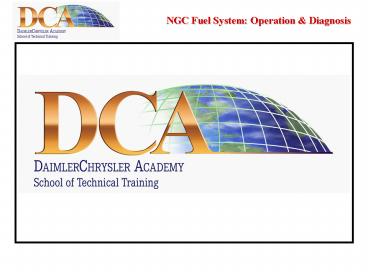Figure 3 - PowerPoint PPT Presentation
1 / 30
Title: Figure 3
1
(No Transcript)
2
(No Transcript)
3
Figure 3 PCM Connectors
4
Figure 4 PCM Connector Pin Removal Tool
5
Figure 5 Diagnostic Pin Out Box
6
Figure 6 PCM Power and Grounds
7
Figure 7 5V Power Supply (three wire analog
sensor)
8
Figure 9 CMP and CKP Sensors
9
Figure 10 11 Typical 6 Cyl CKP Trigger and
Scope Pattern
10
Figure 12 13 Typical 6 Cyl CMP Triggers and
Scope Pattern
11
Figure 14 Superimposed CMP and CKP Scope
Patterns
12
Figure 15 PCM Digital (switched) Inputs
13
Figure 17 2-Wire Analog Inputs
14
Figure 32 Integrated Cruise Control System
15
Figure 18 Integrated S/C MUX Switches
16
Table 1 Integrated S/C MUX Switches Voltages
17
Figure 19 O2 Sensor Signal Circuit
18
Figure 20 Ignition Coil (COP) Circuits
19
Figure 21 Injector Control Circuits
20
Figure 22 BOSS Output Control (dual)
21
Figure 23 High-Side Controlled Outputs
22
Figure 24 O2 Sensor Heater Circuits
23
Figure 25 Charging System Control
24
Figure 26 Speed Density Equation (prior to NGC)
25
Figure 27 Model-Based Fuel Equation (NGC)
26
Figure 29 Natural Vacuum Principle Demonstrated
27
Figure 30 NVLD Assembly (canister mounted shown)
28
Figure 31 NVLD Schematic
29
Figure 34 Double Start Override System
30
- Student Learning Objectives
- Identify and explain the hardware differences
between the NGC PCM and previous PCMs - Demonstrate how to use all special tools
- Identify, explain and diagnose all engine
controller power and ground supplies, as well as
communication networks that are unique to NGC - Identify, explain and diagnose all PCM inputs and
outputs that are unique to NGC - Demonstrate an understanding of the unique
differences of the Model-Based fuel strategy on
NGC vehicles - Demonstrate an understanding of the unique
differences in purge and EGR strategies - Demonstrate an understanding of the unique
differences in accessory controls - Identify, explain and diagnose the NVLD system































